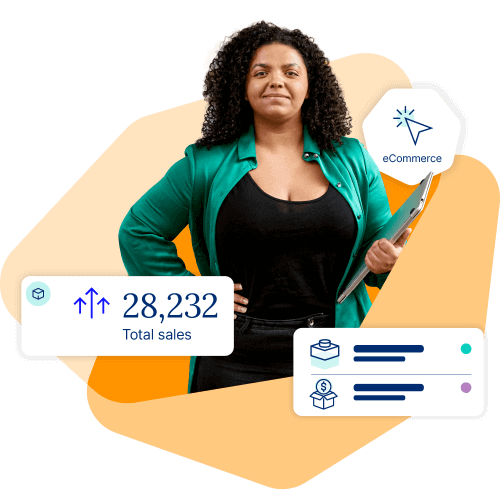

Carrying too much stock drives up your costs in warehousing and expiration of goods. Carrying too little loses you sales.
Getting inventory just right is the Goldilocks tale of commerce, which is why so many strategies have emerged over the last 50 years (especially from the manufacturing sector) including Agile, Lean and Just in Time processes. Companies most certainly employ a combination of these various approaches depending on what they sell, what customer service levels they’ve set, and what sales channels to which they are applying a strategy.
The nature of online sales, whether that is direct to customers or B2B eCommerce, may benefit to some degree from the pull inventory strategy.
(Bear in mind that the terms used in this article are generalized. Supply chain management as an academic discipline encompasses a much more technical and nuanced comprehension of push, pull, agile, etc.)
Pull strategy is inventory management that responds to actual customer demand in realtime. It is often contrasted with push strategy, which builds inventory in advance of anticipated customer demand based on forecasts, seasonal demand planning and historic trends.
Pull begins with the customer’s order, which is why it is sometimes referred to as “demand-driven inventory planning”. A company using a pull system maintains inventory based on what is happening right now, which means they don’t keep a lot of that item in stock, if any at all. It will maintain inventory at that level by procuring or manufacturing the item only after it has been sold, or by replenishing a sold item with only one more item.
A pull strategy works for products you can manufacture/replenish quickly, products with an uncertain demand, or products that do not benefit from economies of scale (ie, making a lot of it doesn’t reduce the cost of selling it).
While a pull strategy does not require the comprehensive historic data that a push strategy calls for, it is still essential to track sales of that item on a daily basis across all sales channels.
The first advantage to pull strategy is the ability to sell without the associated cost of carrying inventory. If you can deliver on promise without that cost, you lower the cost of goods sold and increase your profit margin. The margin increases when taking into account the low cost of eCommerce versus the high overhead of running a retail store.
The benefit of pull to eCommerce goes beyond that, particularly if you’re not selling complicated products (electronics or machinery) or if you are selling and managing inventory (fashion, for instance) that is subject to quickly changing tastes.
eCommerce gives you have the potential to attract a wide, global customer base. A pull strategy can work when you’re selling a highly specialized or individualized product that may not move in volume in a small market, but may attract appreciable interest worldwide.
The pull strategy here requires more lead time to gather components from your suppliers (such as a particular pattern or fabric, for example), so it is important for you to emphasize to customers that their order may take longer to fulfill.
The pull strategy may also come in handy for smaller organizations that have low inventory budgets but that want to provide more options to far reaching customers through their website.
The truth is, however, eCommerce will most likely require a company to adopt a combination of strategies: a push strategy for high volume SKUs that you know have sold well based on forecasting; and a pull strategy for special items that you can’t afford to keep in stock, but that you have reason to believe will appeal to your customers.
Regardless of your strategy, you will need an inventory management solution that can track and report your sales.
Click to find out how Cin7’s reporting capability lets you see your sales in realtime and in historic contexts to help you focus your eCommerce strategies.


Amazon took significant steps recently to get up and running in Australia. Now, word on the street is the eCommerce giant has set its sights on New Zealand. It may not be a question of if but when the company launches Amazon New Zealand. Amazon Activates in Australia Amazon has now leased a distribution center […]

The global pandemic has changed our way of living, shopping and socializing. We are compelled to shop digitally for most things and mobile phones have made that much easier. Some online sellers have benefited from the global pandemic. Existing eCommerce businesses are looking forward to infusing their sites with the latest technologies and tools. Startups […]

Growing a wholesaling business is both challenging and rewarding despite high competition. The world recently experienced a massive socio-economic setback in the form of the Covid-19 pandemic and the wholesale industry has since begun to show a strong recovery. It is clear that you need to be precise about both planning and operations if you […]